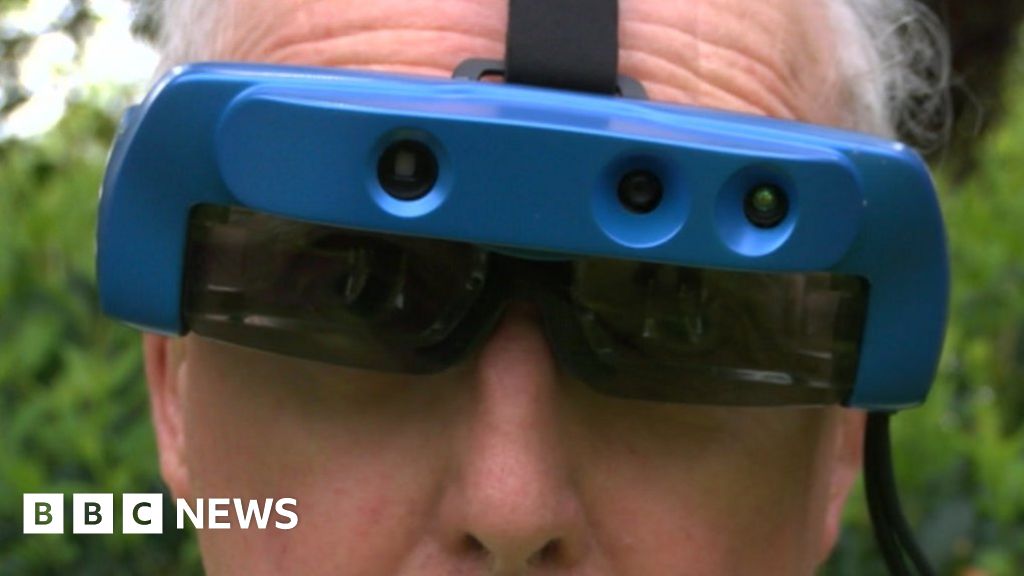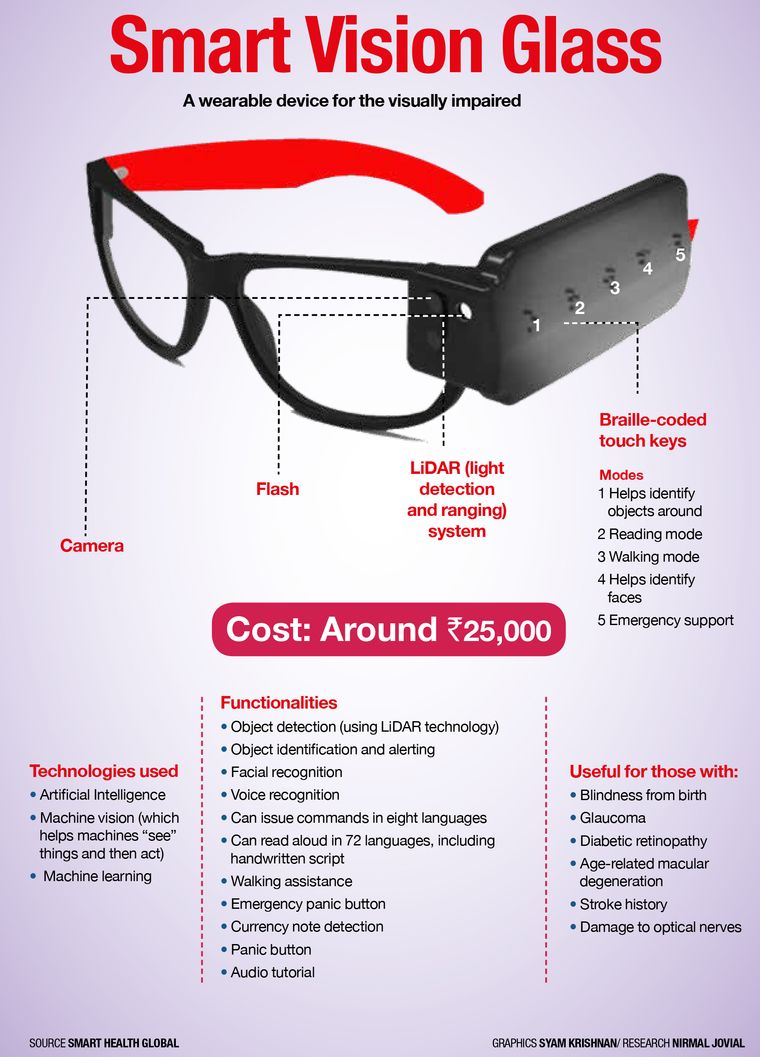Enhancing Availability Via Assistive Innovation for the Blind
The integration of assistive innovation for the blind stands for a pivotal improvement in accessibility, basically modifying how people navigate their environments and engage with culture. From display visitors to innovative clever walking sticks, these devices not just improve self-reliance however also promote inclusivity in different rounds of life. As we discover the diverse sorts of assistive devices and their substantial influence on day-to-day living, it ends up being necessary to take a look at how ongoing technological innovations are reshaping the landscape of support for the blind area. What implications do these growths hold for the future of accessibility?
Overview of Assistive Technology
Assistive modern technology describes a variety of devices and software program created to boost the capacities of individuals with handicaps, including those who are aesthetically impaired or blind. This technology plays a vital role in advertising freedom and improving the lifestyle for users. By offering different approaches for accessing information and executing everyday jobs, assistive modern technology equips people to browse their atmospheres better.
The growth and application of assistive technology accept a selection of concepts targeted at fostering ease of access. These principles include user-centered design, which focuses on the requirements and choices of the person, and the combination of innovation into daily activities. Such advancements ensure that assistive tools are not only useful but easy and likewise user-friendly to make use of.
Additionally, assistive modern technology encompasses a varied range of services, from low-tech choices like magnifiers to high-tech developments such as screen readers and Braille display screens. The continuous evolution of this field is driven by the need to resolve the distinct challenges dealt with by people with aesthetic disabilities (Wearable technology for low vision). As modern technology proceeds to development, the potential for improving availability and promoting inclusivity remains encouraging, ultimately adding to an extra fair culture

Kinds Of Assistive Devices
Countless kinds of assistive devices are offered to sustain people who are blind or visually damaged, each developed to deal with particular demands and obstacles. These devices can be extensively classified into three major kinds: low-tech, mid-tech, and state-of-the-art solutions.
Low-tech tools include items such as magnifiers, Braille tags, and responsive maps. These are relatively easy tools that enhance the individual's ability to engage with their setting without calling for intricate technology.
Mid-tech devices frequently entail advanced features, such as digital magnifiers and mobile Braille note-takers. These gadgets can supply functionalities like speech output, enabling individuals to accessibility info extra successfully.

Influence On Daily Living
The availability of different assistive gadgets dramatically boosts the lifestyle for individuals that are visually damaged or blind, affecting their daily living in extensive means. By incorporating modern technologies such as screen visitors, Braille displays, and audio summary solutions right into their regimens, sight test individuals acquire greater freedom and self-reliance. These tools promote accessibility to information, enabling individuals to do day-to-day jobs, such as reviewing e-mails, navigating public spaces, and taking pleasure in media web content.
In addition, assistive gadgets equip people to engage more completely in social communications and community tasks. The capacity to utilize smart devices furnished with access functions permits seamless communication and connection with others. This connection cultivates a sense of belonging and reduces sensations of isolation.
In specialist settings, assistive modern technology sustains performance by permitting people to full job tasks efficiently. Devices like voice recognition software program and specialized zoom devices make it possible for users to take part in the labor force on equal ground with their sighted peers.

Advancements in Modern Technology
Current technical advancements have dramatically transformed the landscape of tools readily available for people who are aesthetically impaired or blind. The combination of expert system (AI) and artificial intelligence has actually triggered applications that enhance navigation and things acknowledgment. Smartphone apps can currently utilize AI to recognize and define surroundings in real-time, offering customers with valuable contextual details.
Additionally, advancements in haptic modern technology have actually led to the development of smart walking canes geared up with sensors that find barriers and offer tactile feedback. This encourages customers to navigate their atmosphere with increased self-confidence and independence. Innovations in text-to-speech software application and braille display screens have improved the access of digital content, enabling for seamless interaction with different media.
Wearable modern technologies, such as clever glasses, are likewise making strides in helping aesthetic disability. As modern technology continues to evolve, the potential for even more transformative tools continues to be on the horizon.
Future Trends and Innovations
As modern technology rapidly progresses, the future of assistive devices for individuals who are blind holds tremendous assurance. Technologies in artificial intelligence (AI) and machine understanding are poised to change the way blind customers engage with their atmospheres. AI-driven applications are being established to improve object acknowledgment, permitting users to Continue recognize and browse their surroundings with higher simplicity and accuracy.
Additionally, developments in haptic responses modern technology are making it possible for the development of responsive maps and navigation optical center aids that supply real-time details via touch. These advancements not only enhance movement but also foster independence. In addition, wearable gadgets furnished with enhanced truth (AR) features are emerging, offering individuals aesthetic information through sound summaries, consequently linking the gap in between the physical and electronic globes.
Additionally, the integration of clever home modern technology provides brand-new possibilities for ease of access, permitting individuals to control their living atmospheres with voice commands or smartphone applications. As collaboration in between technology programmers and the blind area proceeds, the concentrate on user-centered design will make certain that future developments are tailored to satisfy the distinct needs of this populace (Wearable technology for low vision). The trajectory of assistive technology assures an extra comprehensive and empowering future for individuals that are blind
Verdict
To conclude, assistive innovation plays an essential duty in improving ease of access for people with aesthetic problems. The varied array of gadgets, including display visitors and smart canes, significantly enhances daily living and promotes independence. Continuous developments in modern technology and user-centered layout make sure that these devices cater properly to the special demands of the blind community. As advancements progression, increased inclusivity and empowerment can be prepared for, eventually enriching the lifestyle for those influenced by visual problems.
The assimilation of assistive innovation for the blind stands for a pivotal innovation in ease of access, basically modifying how people navigate their atmospheres and engage with society.Assistive technology refers to a variety of tools and software program created to improve the capacities of people with disabilities, including those that are visually damaged or blind. Wearable technology for low vision.As technology rapidly advances, the future of assistive devices for people that are blind holds enormous assurance. The trajectory of assistive innovation guarantees a much more inclusive and empowering future for individuals who are blind
In final thought, assistive innovation plays a critical role in improving access for individuals with aesthetic impairments.